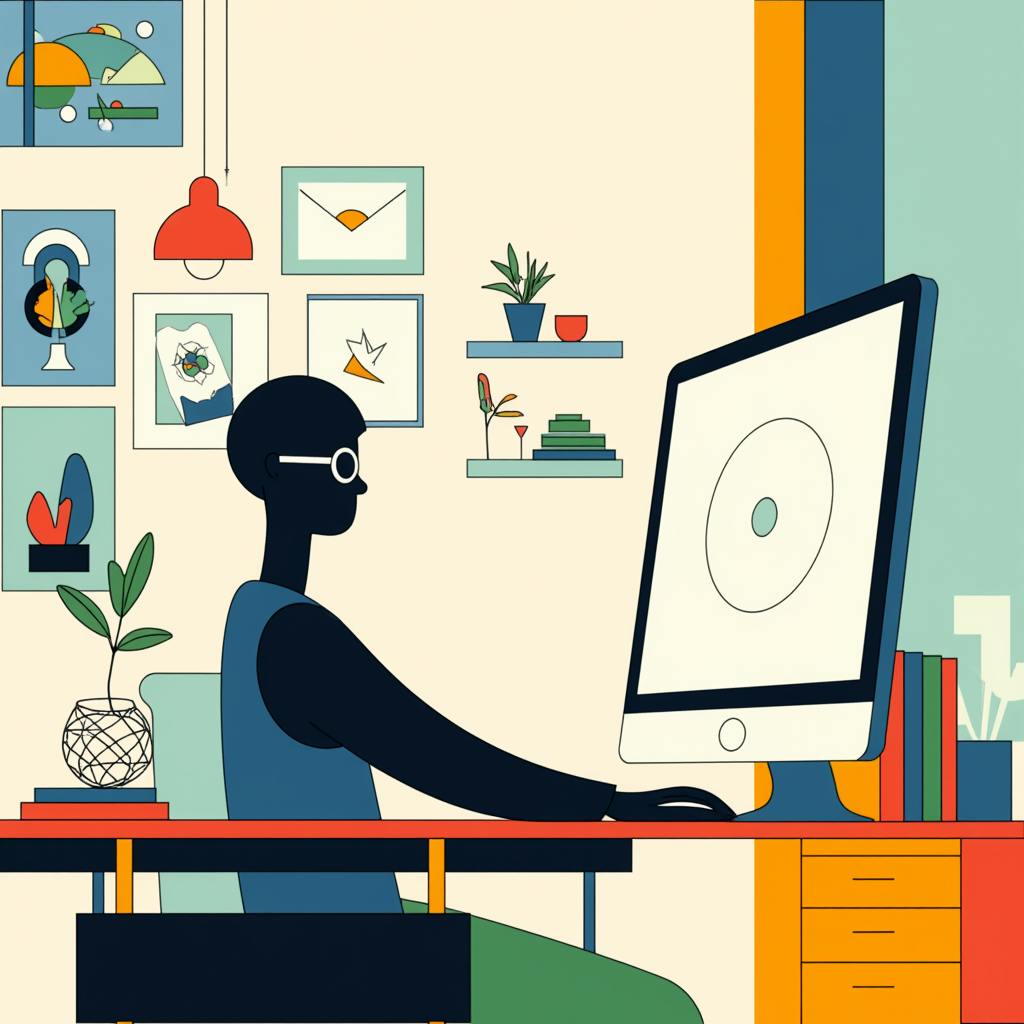Understanding the elements of graphic design is essential for anyone venturing into the world of visual communication. These fundamental components are the building blocks of design, helping to convey messages effectively and creatively. If you've ever wondered, "What are design elements?" or sought examples of graphic elements, you're in the right place. This article will provide you with a clear, concise, compelling, and credible overview of the core elements of graphic design.
What are the Elements of Graphic Design?
The elements of graphic design are the visual tools that designers use to construct aesthetically pleasing and functional works. These include line, shape, color, texture, space, form, and typography. Each element serves a specific purpose and can be combined in various ways to achieve the desired effect.
Line
A line is one of the simplest yet most powerful elements of design. Lines can guide the viewer's eye, create emphasis, and convey a sense of movement. Whether they're straight, curved, or patterned, lines are used to connect points, divide spaces, or highlight areas within a design. An example of graphic elements in the context of line usage would be the clean, sharp lines seen in modern minimalist designs.
Shape
Shapes are two-dimensional areas with defined boundaries. Basic geometric shapes like circles, squares, and triangles, as well as organic shapes with more freeform outlines, can express different concepts and intentions. The utilization of shapes can influence the mood and perception of a design, providing structure or creating emphasis.
Color
Color is a crucial element of graphic design, vital for creating mood and attracting attention. Understanding color theory (including hue, saturation, and brightness) allows designers to evoke emotions and communicate effectively. For example, warm colors like red and yellow can evoke feelings of excitement or energy, while cool colors like blue and green can produce a calming effect.
Texture
Texture refers to the surface quality of a design, which can be tactile (physical texture) or visual (implied texture). The use of texture adds depth and interest, creating a sense of realism. An example of texture usage is when designers incorporate textures in digital projects to simulate the look and feel of physical materials like paper or fabric.

AI made with Dean Jones
Space
Space, also referred to as white space or negative space, pertains to the area around and between elements in a design. Understanding how to use space effectively can enhance visual impact, direct focus, and improve readability. For instance, ample white space in a design can lead to a clean, uncluttered look, which is often seen in luxury brand advertising.
Form
Form is similar to shape but in a three-dimensional context. It refers to objects with depth, giving a more realistic feel. In graphic design, form is often created through techniques like shading and perspective, making flat images appear to have volume.
Typography
Typography is the art and technique of arranging type. It involves choosing fonts, line heights, and spacing to ensure readability and align with the design's message. Effective typography can make text visually appealing and easy to read, playing a crucial role in branding and communication.
Frequently Asked Questions
Why are the elements of graphic design important?
The elements of graphic design are important because they form the foundation of every design project. By mastering these elements, designers can create compelling visuals that communicate messages effectively and resonate with their audience.
How can beginners practice using the elements of design?
Beginners can practice using the elements of design by experimenting with different combinations in various projects, such as creating logos, posters, or web layouts. Studying existing designs to see how professionals employ these elements can also provide valuable insights.
What are some examples of graphic elements in use?
Examples of graphic elements in use include the strategic use of contrasting colors for emphasis, incorporating lines to lead the viewer's eye, or applying textures to add a tactile quality to digital illustrations.
FAQ: Understanding the Elements of Graphic Design
Welcome to our comprehensive FAQ on the elements of graphic design. As a knowledgeable design instructor specializing in graphic design, I'm here to guide you through the foundational aspects of this creative field. Whether you're a beginner or simply looking to refine your understanding, this article will address your questions and provide valuable insights.
How can beginners understand the elements of graphic design?
Beginners can understand the elements of graphic design by:
- Studying Examples: Analyzing existing designs allows you to see how elements are applied effectively. Pay attention to designs that resonate with you and identify each element's role.
- Practicing Regularly: Engage in hands-on activities by creating simple projects focused on one or a few elements at a time. Experiment with various techniques and observe the results.
- Learning from Online Tutorials: Leverage online resources, tutorials, and video courses from design experts. These materials often break down complex concepts into digestible lessons.
- Joining Design Communities: Engage with online forums, social media groups, or local design clubs where you can ask questions, share work, and receive feedback from more experienced designers.

AI made with Dean Jones
What is included in 'The Elements of Graphic Design Explained for Beginners'?
"The Elements of Graphic Design Explained for Beginners" typically covers:
- Detailed Descriptions: Each element is clearly defined and illustrated with visual examples to demonstrate its function and application.
- Usage Tips: Practical advice on how to effectively use each element within different types of projects, such as branding, web design, or print media.
- Exercises and Challenges: Interactive exercises encourage you to apply what you've learned, helping to reinforce your understanding and develop skills in a real-world context.
- Visual Hierarchy and Composition: Insights into how elements can be combined to create balanced compositions, guide the viewer's eye, and convey messages with clarity and impact.
Are there any resources to help beginners learn about graphic design elements?
Yes, there are numerous resources available for beginners to learn about graphic design elements:
- Books: Titles like "The Elements of Graphic Design" by Alex W. White and "Graphic Design: The New Basics" by Ellen Lupton offer structured insights into design principles.
- Online Courses: Platforms like Coursera, Udemy, and Skillshare offer courses specifically focused on graphic design fundamentals, including the elements.
- YouTube: Channels such as The Future and Will Paterson Design provide valuable tutorials and demonstrations on the use of graphic design elements.
- Websites and Blogs: Websites like Canva Design School and Smashing Magazine publish articles and guides that delve into design elements and principles.
- Mobile Applications: Apps like Procreate and Adobe Fresco allow beginners to experiment with digital design, incorporating the elements into their projects interactively.
By immersing yourself in these resources and consistently practicing, you'll develop a strong foundation in graphic design and gain confidence in applying the elements to your creative projects. Happy designing!
Conclusion
In this exploration of the elements of graphic design, we've delved into line, shape, color, texture, space, form, and typography — each playing a vital role in crafting effective and engaging designs. By understanding and mastering these components, you can elevate your design skills and create compelling visuals that effectively communicate your intended message. Embrace these fundamentals, and let the elements of graphic design guide your creative journey.

